Projects
We have a strong record of accomplishments in national and international projects. Please feel free to browse through our research and implementation projects.
Selected projects:
Target Recognition using Artificial Intelligence (TRAI)
|
Description |
The project “Target Recognition using Artificial Intelligence” (TRAI) evaluates chances and risks of AI systems for the automated detection of prohibited items in X-ray images (APIDS). Currently, first such systems are commercially available. These systems have a big potential to increase security in aviation. However, it is still unclear how well they actually perform for different threats and how the interaction between APIDS and security officers should be designed for optimal security and efficiency. TRAI aims at providing answers to these questions. |
|
Co-Funding |
Federal Office of Civil Aviation and University of Applied Sciences and Arts Northwestern Switzerland (FHNW) |
|
Scope |
Switzerland |
|
Start |
2021 |
ROBUST RISK BASED SCREENING AND ALERT SYSTEM FOR PASSENGERS AND LUGGAGE (TRESSPASS)
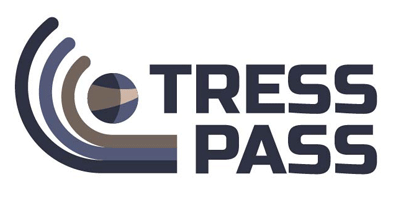
|
Description |
The overall scope of TRESSPASS is to modernize the way security checks at border crossing points (BCPs) are held out. TRESSPASS imports the idea of risk based security checks and proposes an analytic framework for modelling risk as well as a systematic approach of quantifying risk, based on a set of indicators that can accurately be measured across all four tiers of the Integrated Border Management. Once these indicators are accurately estimated from available data collected from background information, sensors and applications, the risk for each traveler is reliably calculated, based on the four-tier risk management approach introduced in TRESSPASS. Based on this risk, the system then adjusts the number and types of security checks required for each traveler, congruent with the associated risk, in order to maintain a desired security level while optimizing security. Special attention is paid in maintaining a level of mutual trust between the security process and the traveler throughout the entire screening process. Extensive simulations will be used to first test the proposed approach before implementing and validating it in three different pilots covering all three modalities: land, maritime, and air. For more information see: https://www.tresspass.eu/ |
|
Co-Funding |
EU Horizon 2020 Programme, Grant Agreement No. 787120 |
|
Scope |
Europe |
|
Start |
2018 |
SYSTEMATIC THREAT ASSESSMENT, NEW STANDARDS, LEARNING TECHNOLOGY RESEARCH – TRANSFER INTO PRACTICE (STA²RT)

|
Description |
In addition to the continuation and further development of the Systematic Threat Assessment (STA), this project aims to answer practically relevant questions in connection with the change towards the latest equipment standard in the field of hand luggage security screening. The goal is to then increase both effectiveness and efficiency in the defense against unlawful acts against civil aviation in Switzerland through a targeted transfer into practice. Firstly, the STA will be continued and further developed with new concepts and methods. Furthermore, practically relevant questions regarding the use of 3D computed tomography (CT) and explosives detection (EDSCB) for cabin baggage screening (CBS) will be examined scientifically. Additionally, new digital learning technologies using virtual reality (VR) will be evaluated for training and competency assessment of security screeners. Last but not least, a transfer into practice is to take place by transferring research results into existing structures and processes for personnel selection, training and competency assessment. |
|
Co-Funding |
Federal Office of Civil Aviation Switzerland |
|
Scope |
Switzerland |
|
Start |
2018 |
Aviation Security Systems: Unpredictability Measures Evaluation (ASSUME)

|
Description |
Aviation security measures tend to be predictable, especially for insiders. This can produce severe vulnerabilities in the security level making it potentially easier to circumvent the measures. A project headed by Zurich State Police, Airport Division, was conceived in collaboration with CASRA and the Federal Institute of Technology Zurich (ETHZ) to address this aspect. Within it, basic and applied research is conducted on the impact and mechanisms of unpredictable measures in aviation security on risk perception and risky behavior. A long-term reduction of insider threat is sought through the evaluation and optimization of existing security measures. A central contribution of CASRA to the project is intelligence research and development. |
|
Co-Funding |
Federal Office of Civil Aviation Switzerland |
|
Scope |
Switzerland |
|
Start |
2017 |
PILOT PROJECT WITH THE UNITED NATIONS IN LATIN AMERICA
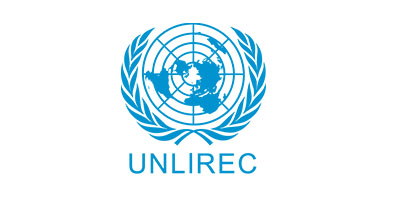
|
Description |
The United Nations Regional Centre for Peace, Disarmament and Development in Latin America and the Caribbean (UNLIREC) conducted the pilot of the Course for Interdicting Small Arms in Postal Shipments (ISAPS) in Costa Rica in close collaboration with CASRA. The course aims at improving the capacity of officials to identify weapons and parts/components in postal shipments by means of X-ray technology. For more information, please follow the link to UNLIREC’s website here. Further courses have since been conducted in other countries. |
|
Co-Funding |
UNLIREC |
|
Scope |
Postal screening in Latin America |
|
Start |
2017 |
A Project for Checkpoints for Airport Security of Tomorrow (4CAST)
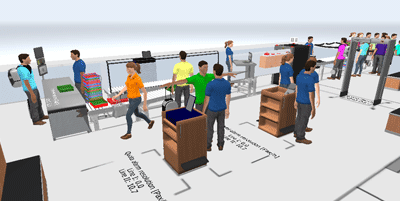
|
Description |
Technological change and ever evolving threat scenarios lead to new and adaptions of existing screening processes. When changing the screening process the impact on effectiveness, efficiency, passenger satisfaction and screeners must be considered. In this project, a large amount of data from simulation models of checkpoints, from human factor models, together with meta data from screeners are aggregated in a secure data base. A connected data analytics and visualization platform will allow airports, regulators and other end-users to view the results of simulation experiments and make decisions based on reliable data. |
|
Co-Funding |
Federal Office of Civil Aviation Switzerland |
|
Scope |
Switzerland |
|
Start |
2017 |
THREAT IMAGE PROJECTION FOR REMOTE CABIN BAGGAGE SCREENING (RCBS)
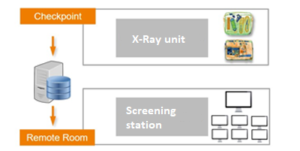
|
Description |
As part of the project “Threat Image Projection for Remote Cabin Baggage Screening” (RCBS) current strengths and weaknesses of different RCBS systems are evaluated based on scientific methods. Further questions are addressed either in a laboratory setting or in scientific field studies at airports and there will be improvement measures determined. |
|
Co-Funding |
Federal Office of Civil Aviation Switzerland |
|
Scope |
Switzerland |
|
Start |
2016 |
MULTI-VIEW & 3D CT FOR ACBS AND HBS (3DMV)
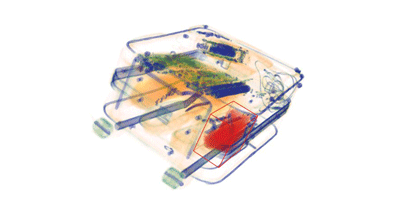
|
Description |
The project “Multi-view & 3D CT for ACBS and HBS” (3DMV) aims at scientific research and evaluation of the potential of the multi-view and 3D computer tomography technologies for enhancing the effectiveness and efficiency of aviation security in Switzerland. Particular attention is paid to aspects of human-machine interfaces and which competencies human operators must have in order to work with this kind of equipment in a most effective way. The Swiss Federal Laboratories for Materials Science and Technology (EMPA) is an important partner in this project and helps to conduct fundamental research. In various studies we will examine potential benefits and challenges, as well as potential implications in regards to the human factor. |
|
Co-Funding |
Federal Office of Civil Aviation Switzerland |
|
Scope |
Switzerland |
|
Start |
2015 |
SYSTEMATIC THREAT ASSESSMENT AND TIP OPTIMIZATION (SGATO)
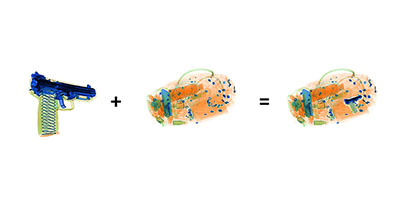
|
Description |
The aim of this project is to increase the effectiveness and efficiency of security measures in cabin baggage and hold baggage screening by using a systematic threat assessment as well as optimizing the threat image projection (TIP) system. |
|
Co-Funding |
Federal Office of Civil Aviation Switzerland |
|
Scope |
Switzerland |
|
Start |
2015 |
COMPUTER-BASED TESTS FOR CERTIFICATION OF AVIATION SECURITY SCREENERS IN SWITZERLAND
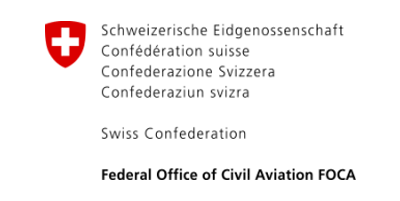
|
Description |
Certification and competency assessment of airport security screeners have become very important topics in the last few years. A common certification procedure helps to achieve comparable standards across different airports and countries. On behalf of this project computer-based tests are used to measure ability and competency of airport security screeners in six Swiss airports. The Object Recognition Test (ORT) is used to assess screener ability needed for recognizing threat items in rotation, when they are superimposed by other objects and placed in close-packed bags. The X-Ray Competency Assessment Test (X-Ray CAT) is used to assess visual knowledge about prohibited items. A theoretical exam on computer (TEC) is applied to test the theoretical knowledge required in airport security screening procedures. The results provide a solid basis for a reliable and standardized certification procedure performed by the Swiss airports in collaboration with the Swiss Federal Office of Civil Aviation (FOCA). |
|
Funding |
Swiss airports and Federal Office of Civil Aviation Switzerland |
|
Scope |
All Swiss airports |
|
Collaborations |
FOCA, Swiss airports and police authorities |
|
Start |
2004 |
INCREASING SECURITY AND EFFICIENCY AT ZURICH AIRPORT
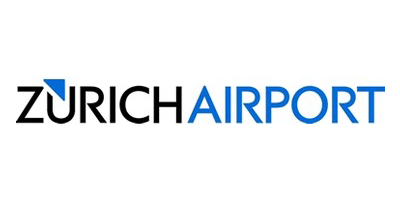
|
Description |
In the last decade large investments have been made into aviation security technology. However, the most expensive equipment is of small value if the humans that operate it are not selected and trained to perform their task accurately and efficiently. In this project security and efficiency is increased by (1) applying reliable tests for pre-employment assessment, (2) by using individually adaptive training (X-Ray Tutor), and (3) by implementing TIP. In this project the data for assessing the effectiveness of these instruments are analyzed. Additionally, different basic and applied aspects of the object detection and visual cognition are examined. |
|
Funding |
Flughafen Zürich AG |
|
Scope |
Flughafen Zürich AG |
|
Collaborations |
Zurich State Police, Airport Division; Custodio; Protectas SA |
|
Start |
2001 |
Pilot study with Cooperative Aviation Security Program - Asia Pacific Region (CASP-AP)
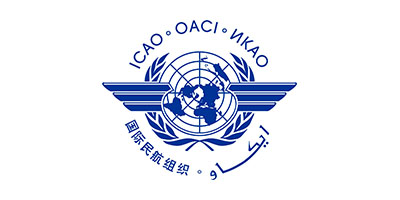
|
Description |
Participants from eight different countries from the Asia Pacific Region evaluated the benefit of the web-based CASRA Solution as a capacity-building tool regarding personnel selection, X-ray image recognition training, as well as competency assessment. The results showed again that training with XRT3 significantly improves screeners’ detection performance (as measured with the X-Ray CAT) compared to no training and that this improvement already occurs after less than ten hours of training. |
|
Funding |
– |
|
Scope |
Cabin baggage screening at international airports |
|
Duration |
2018 – 2019 |
STUDY WITH CARNIVAL MARITIME

|
Description |
The objective of the study was to evaluate the CASRA Solution for use on board the COSTA CROCIERE fleet, specifically regarding suitability, effectiveness and process support for the areas of personnel selection, X-ray image recognition training, and competency assessment. The study replicated previous findings in a maritime use case: A combined application of the X-Ray ORT, XRT3 and X-Ray CAT is an effective and efficient approach to select job applicants with a high potential to become good screeners, train them with an individually adaptive algorithm and level structure, and assess their performance with reliable image interpretation tests to verify compliance with security standards. |
|
Funding |
Carnival Maritime |
|
Scope |
Security officers of Carnival Maritime |
|
Duration |
2017 – 2018 |
OSARP TRAINING STUDY
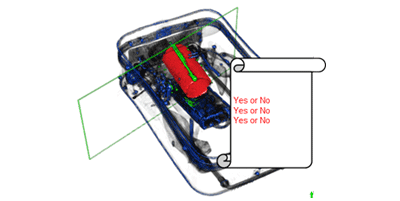
|
Description |
|
|
|
Funding |
X-ray manufacturer, FHNW | |
|
Scope |
Hold baggage screening at an international airport |
|
|
Duration |
2017 – 2018 |
PSYCHOLOGY STUDENT WORK PASSENGER SATISFACTION
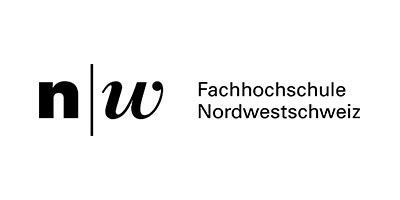
|
Description |
|
|
|
Funding |
– | |
|
Scope |
Cabin baggage screening at an international airport |
|
|
Duration |
2017 |
Certification Pilot Study with the Croatian Civil Aviation Agency (CCAA)
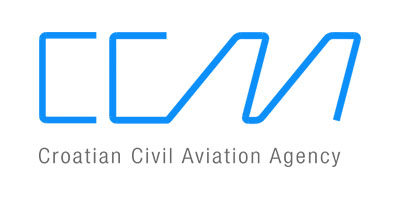
|
Description |
Security officer certification is ideally preceded by a reliable selection process, sound training of personnel, and the periodical verification of required competencies. A practical implementation of a certification procedure was conducted collaboratively with the Croatian Civil Aviation Agency (CCAA) in a pilot study. |
|
Funding |
CCAA |
|
Scope |
Aviation security officers at Croatian Airports |
|
Duration |
2017 |
2D VS. 3D X-RAY IMAGE DISPLAY STUDY
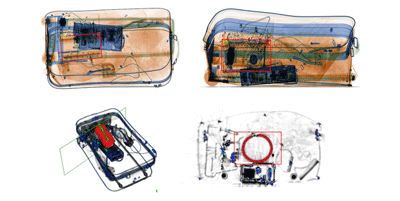
|
Description |
While currently state-of-the-art X-ray machines employed at airports for hold baggage screening display static 2D single or multi-view X-ray images, new developments in X-ray screening technology offer 3D rotatable X-ray images, allowing screeners to view a bag from different angles. The purpose of this study is to evaluate this new technology and its effects on the screeners’ detection performance in hold baggage screening (HBS). More specifically, it is investigated if threat detection performance differs significantly between screeners when they analyze X-ray images in single view 2D vs. 3D rotatable X-ray images. If detection performance is significantly better when images are analysed in 3D compared to 2D single view, results imply that viewing baggage with 3D rotatable images provides a significant benefit to the screeners. Furthermore, the results of the project shall give an indication on how screeners who will work with 3D rotatable images for the first time are able to adapt to this compared to screeners who are already experienced in analysing 3D rotatable images. The project is being conducted by CASRA in collaboration with the German Federal Police. |
|
Funding |
X-ray manufacturer, FHNW |
|
Scope |
Hold baggage screening at one Swiss and one French airport |
|
Duration |
2015 – 2017 |
Automated Comparison of X-ray Images for Cargo Scanning (ACXIS)

|
Description |
ACXIS is a European research project within the Seventh Framework Programme answering the call SEC-2012.3.4-1: «Research on “automated” comparison of x-ray images for cargo scanning with reference material (use of historic images in an automated environment) to identify irregularities» of the European Commission. The main objectives of the project ACXIS are to develop a manufacturer-independent reference data base for X-ray images of illegal and legitimate cargo, procedures and algorithms to render uniform X-ray images of different cargo scanners and measurement parameters, and an automated identification of potentially illegal cargo. Historic images of illegitimate cargo, images of illegal cargo mock-ups as well as images of legitimate cargo will be integrated into the reference data base. |
|
Co-Funding |
Seventh Framework Programme (FP7) of the European Commission |
|
Scope |
Europe |
|
Duration |
2013 – 2017 |
INTELLIGENCE, COMPETENCE AND UNPREDICTABILITY (ICU)
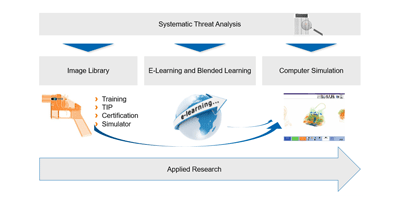
|
Description |
The aim of this project is to increase the effectiveness and efficiency of security measures in cabin baggage and hold baggage screening by developing and evaluating intelligence, competence and unpredictability measures. The intention is to combine training of security officers and knowledge about current and emerging threats with unpredictable security measures. The ICU project is funded by Federal Office of Civil Aviation (FOCA) and has a duration of three and a half years. |
|
Co-Funding |
Federal Office of Civil Aviation Switzerland |
|
Scope |
Switzerland |
|
Duration |
2013 – 2016 |
ADVANCED CABIN BAGGAGE SCREENING (ACBS)
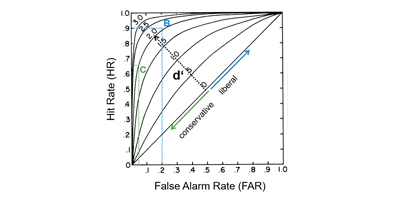
|
Description |
The Ministry of Security and Justice in the Netherlands (NCTV) has funded a new study in the area of Advanced Cabin Baggage Screening (ACBS). New technological advancements of X-ray screening technology (ACBS) include features such as automated threat detection, multiple views or 3D rotatable views of luggage, in order to enhance the detection of prohibited items in passenger bags. In this study, it will be evaluated how man-machine system performance can be improved through the application of automated explosive detection. Performance (detection performance and reaction time) will be compared between conditions where ACBS automated explosive detection is used to when security screening is conducted with conventional X-ray machines. Scientifically based recommendations for criterion settings (percent detection and false alarms) and the interaction process of the human operator and the machine (alarm resolution procedure) when ACBS is applied will be derived. The project is being conducted by CASRA in collaboration with NCTV and the German Federal Police. |
|
Funding |
Ministry of Security and Justice in the Netherlands (NCTV) |
|
Scope |
Amsterdam Airport Schiphol and Zurich Airport |
|
Duration |
2013 – 2015 |
CERTIFICATION UPGRADE 2013

|
Description |
In Switzerland aviation security screeners have to be certified regularly since 2004 (see project “Computer-based tests for certification of aviation security screeners in Switzerland”). The goal of the Certification Upgrade 2013 project is to enhance two main areas of that project:
|
|
Co-Funding |
Federal Office of Civil Aviation Switzerland |
|
Scope |
Switzerland |
|
Duration |
2013 – 2014 |
SCOPING STUDY ON PROFILING AND BEHAVIORAL ANALYSIS AS A SECURITY MEASURE AT SWISS AIRPORTS
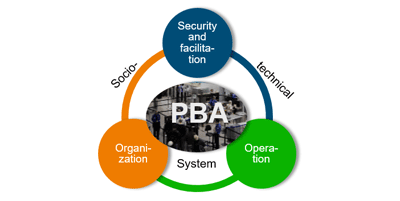
|
Description |
The aim of this project is to examine profiling and behavioral analysis as a new and additional security measure at airports and create a scientifically sound foundation for an implementation of behavioral security screening (BSS) in Switzerland. BSS means a shift of attention away from the usual threat items towards the person, his or her behavior and, ultimately, the underlying motivation. The first step of the scoping study is the review and analysis of existing literature, complemented by interviews with international experts in the field of BSS. In a next step the gathered findings will be used to conduct scientifically based workshops with relevant stakeholders to develop possible scenarios for the implementation of BSS. As a final step, a pilot study will provide information on the benefits of BSS training for security officers. |
|
Co-Funding |
Federal Office of Civil Aviation Switzerland |
|
Scope |
Switzerland |
|
Duration |
2013 – 2014 |
Accelerated Checkpoint Design Integration Test and Evaluation (XP-DITE)

|
Description |
The XP-DITE project brings together 13 organizations across Europe to develop, demonstrate and validate a comprehensive, passenger-centered, outcome-focused, system-level approach to the design and evaluation of airport security checkpoints. XP-DITE will allow airports, checkpoint designers and regulators to incorporate a wide range of requirements and evaluate checkpoint performance against system-level security, cost, throughput, passenger satisfaction and ethical factors. The result will be robust security performance, whilst giving airports the freedom to use innovative procedures and technology to improve passenger convenience and reduce delays. For more information please see www.xp-dite.eu. |
|
Co-Funding |
Seventh Framework Programme (FP7) of the European Commission |
|
Scope |
Europe |
|
Duration |
2012 – 2017 |
COMPUTER BASED TRAINING FOR X-RAY SCREENING USING XRT3 AT ALL CANADIAN AIRPORTS
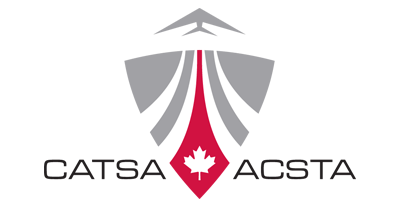
|
Description |
The objective of this project is to provide CATSA an innovative and very efficient and effective computer based training tool for use in training, skill development and testing personnel in X-ray image threat detection. This is accomplished by the new version of X-Ray Tutor (XRT3). It is a complete new software replacing the previous version XRT2 which was installed at all 89 Canadian airports in 2005-2006. Key features of XRT3 for CATSA are:
XRT3 will be substituted by XRT in 2019, the newest software solution of CASRA. |
|
Funding |
Canadian Air Transport Security Authority (CATSA) |
|
Scope |
All 89 Canadian Airports |
|
Duration |
2011 – 2019 |
X-RAY TRAINING AND COMPETENCY ASSESSMENT OF SECURITY OFFICERS AT THE FEDERAL COURT BELLINZONA, SWITZERLAND
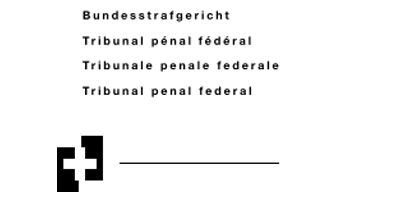
|
Description |
The aim of this project is to increase X-ray image interpretation competency of security officers at the federal court by applying X-Ray Tutor, an individually adaptive computer based training system as well as competency assessment tests used for certification at Swiss airports. |
|
Funding |
Federal Court in Bellinzona |
|
Scope |
Federal Court in Bellinzona |
|
Duration |
2011 – 2013 |
SELECTION, INITIAL TRAINING, X-RAY TRAINING OF SWISSPORT’S SECURITY OFFICERS AT GENEVA AIRPORT

|
Description |
The aim of this project is the selection of suitable employees, initial training in the area of cargo screening, as well as X-ray training to increase X-ray image interpretation competency of security officers. Therefore the scientifically based X-Ray Object Recognition Test (X-Ray ORT), our blended learning concept for cargo screening as well as X-Ray Tutor (XRT) was used. |
|
Funding |
Swissport Geneva |
|
Scope |
Swissport Geneva |
|
Duration |
2011 – 2013 |
CERTIFICATION SOFTWARE FOR THE CIVIL AVIATION OFFICE (CAO) OF THE REPUBLIC OF POLAND

|
Description |
Certification and competency assessment of aviation security officers have not only become very important in the last few years, but also mandatory according to the EU regulation. A common certification procedure helps to achieve comparable standards across different airports or even countries. Most important, certification tests have to be valid, reliable, objective and standardized. On behalf of this project a testing was delivered to the Civil Aviation Office (CAO) of the Republic of Poland. The software includes exam modules that enable assessment of individuals’ competency to analyze images generated by X-ray machines used for screening of cabin baggage, hold baggage, cargo and mail focused on detection of prohibited items. |
|
Funding |
CAO |
|
Scope |
All aviation security officers at Polish Airports |
|
Duration |
2011 – 2012 |
APPLICATION OF X-RAY IMAGE INTERPRETATION TESTS FOR SECURITY OFFICERS AT THE NUCLEAR POWER PLANT MÜHLEBERG, SWITZERLAND

|
Description |
The goals of this project are the implementation of recurrent X-ray image interpretation tests as well as increasing the X-ray image interpretation competency of security officers working at the Nuclear Power Plant Mühleberg. The following tests will be applied: X-Ray Object Recognition Test (X-Ray ORT), X-Ray Competency Assessment Test for Cabin Baggage Screening (X-Ray CAT CBS), X-Ray Tutor (XRT CBS). Detailed analyses regarding the effectiveness and efficiency in detecting prohibited items in security controls using X-ray screening will be carried out. In this project, the same tests which are used for the certification of airport security screeners in Switzerland are employed. |
|
Funding |
Nuclear Power Plant Mühleberg, Switzerland |
|
Scope |
Nuclear Power Plant Mühleberg, Switzerland |
|
Start |
2010 |
TESTING THE INFLUENCE OF MOTION IMAGING FOR THE INSPECTION OF LAPTOPS IN CABIN BAGGAGE SCREENING

|
Description |
Large amounts of money are being invested into the improvement and further development of new screening technologies, continuously aiming at improving image quality, automatic explosive detection and enhancing the detection of prohibited items for human operators i.e. screening officers. Especially the latter is of high importance, as the actual identification of prohibited items lies mainly in the hands of human operators. Thus, it is of great important to evaluate any new technologies and machines developed for screening purposes with regard to image quality and the actual benefits for the people that have to handle and work with these machines (i.e. man-machine-interaction). The aim of this project was to compare motion imaging (Array CT machine) to single view imaging with regard to detection performance. More specifically, it was investigated whether a significant difference in detection performance aroused when motion imaging was used and laptops were left inside passenger bags compared to the situation where only single view images were provided but laptops were taken out of passenger bags. |
|
Funding |
Reveal/SAIC |
|
Scope |
Reveal/SAIC |
|
Duration |
2011 |
APPLICATION OF X-RAY IMAGE INTERPRETATION TESTS FOR SECURITY OFFICERS OF THE SWISS FEDERAL SECURITY SERVICE FEDPOL
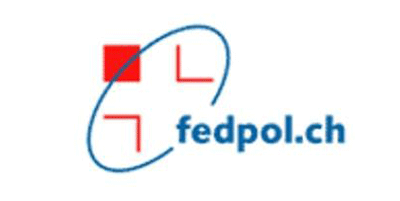
|
Description |
The aim of this project is to conduct recurrent X-ray image interpretation tests for X-ray screeners of the Swiss Federal Security Service FEDPOL. The project is based on regulations specified in the Swiss National Aviation Security Program (NASP) which specifies the certification of aviation security screeners. The following tests are conducted periodically: X-Ray Object Recognition Test (X-Ray ORT 1.0), X-Ray Competency Assessment Test for Cabin Baggage Screening (X-Ray CAT CBS 4.0), X-Ray Competency Assessment Test for Hold Baggage Screening (X-Ray CAT HBS 4.0). Detailed analyses were conducted regarding the effectiveness and efficiency in recognizing prohibited items in security controls using X-ray screening. |
|
Funding |
Eidgenössisches Justiz- und Polizeidepartement EJPD, Bundesamt für Polizei FEDPOL, Bundessicherheitsdienst |
|
Scope |
Switzerland |
|
Duration |
2008 – 2012 |
ECAC BDS TESTING OF L-3 PROVISION 100 (MIKS)
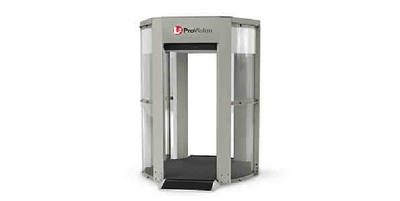
|
Description |
In state-of-the art airport security screening, passengers have to walk through a metal detector before being allowed to board an aircraft. With bodyscanner technology it is possible since recently to screen passengers more accurately to examine whether they carry prohibited items on the body. The Technical Task Force of the European Civil Aviation Conference (ECAC) has created a Body Scanners Study Group (ECAC BSSG) in 2007. In a two years project, this group has developed a Body Scanner Testing Methodology (BSTM). The main aim of the BSTM is to test human-machine performance using body scanners for the detection of prohibited items carried by passengers. In this project, the BSTM was applied to test the L-3 ProVision 100 body scanner. This project was conducted to apply the BSTM (this was the first time world wide) and to refine the BSTM. The result of this project provided important information for using the BSTM for certification of body scanners in EU and ECAC member states. |
|
Funding |
Dutch National Coordinator on Counter-Terrorism |
|
Scope |
EU and ECAC member states |
|
Collaborations |
Zurich Airport; Zurich State Police, Airport Division; Zurich City Police, Scientific Research Service |
|
Duration |
2008 – 2009 |
STUDY ON THE IMPACT OF DUAL VIEW AND AUTOMATIC EXPLOSIVES DETECTION IN HAND LUGGAGE SCREENING OF LAPTOPS
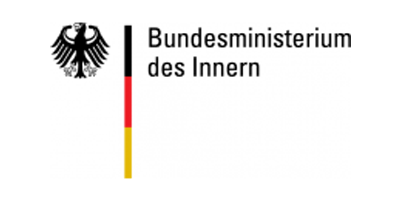
|
Description |
This study investigated the impact dual view and automatic explosives detection technology have on the performance of aviation security screeners who visually inspect hand luggage using X-ray screening systems. So-called “advanced cabin baggage X-ray screening” (ACBX) systems provide multiple X-ray views of bags and automated explosive detection. A recent study by von Bastian, Schwaninger and Michel (2008) has shown that multi-view X-ray technology can generate key benefits for the screening of hand luggage. One aspect of specific interest in the present study was whether or not it will be possible to leave laptops in a passenger’s hand luggage or whether laptops will continue having to be removed from hand luggage and be screened separately. It was found that ACBX systems have advantages under certain specific conditions, e.g. for the detection of rotated guns. However, leaving laptops in passenger bags cannot be recommended, even if ACBX technology is used. The results of the study have a substantial impact on aviation security regulations in Germany and other European member states. |
|
Funding |
German Ministry of the Interior |
|
Scope |
European airports |
|
Collaborations |
Kompetenzzentrum für polizeiliche Detektionstechnologien Lübeck; Flughafen Nürnberg; Sicherheitsgesellschaft Nürnberg |
|
Duration |
2008 |
IDENTITY VERIFICATION FROM PHOTOGRAPHS IN TRAVEL DOCUMENTS: MEASURES OF PERFORMANCE ENHANCEMENT
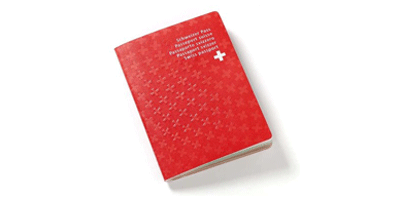
|
Description |
At border control, it is the security personnel’s job to identify possible passport fraud, in particular to verify whether the photograph in a travel document matches its bearer. However, as various studies have shown, identity verification from document photographs is far from accurate. The aim of this project is thus to develop a procedure for security personnel to enhance identity verification performance from document photographs. In three studies, four factors shall be investigated: First, the reduction of time pressure in identity verification; second, the potential benefit of inversion of the document photograph on identity verification; third, the enhancement of sensitivity towards configural information contained in faces through training; and last, enlargement of the document photograph for better identity verification. All four factors are believed to be potentially beneficial on identity verification performance and could well influence standard verification procedures at border control. |
|
Funding |
Stiftung Suzanne und Hans Biäsch zur Förderung der Angewandten Psychologie |
|
Scope |
Research grant to S. Chiller-Glaus |
|
Collaborations |
Zurich State Police, Airport Division |
|
Duration |
2007 – 2008 |
STUDY ON THE EFFECT OF CABIN BAG SIZE ON THE EFFECTIVENESS OF SCREENING
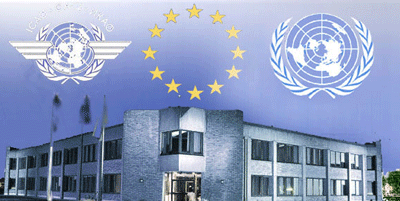
|
Description |
The aim of this project was to provide the basis for scientifically based conclusions about the significance of the bag size variable by itself and in relation with other variables. In this research project the effect of a number of variables including bag size, bag complexity, packing density, etc, on screener performance was investigated. For this, a set of X-ray images of cabin bags were captured, and presented in CBT format to screeners across nine European airports. The detection performance of the screeners was recorded, and analysed against the identified variables. The study provided scientifically based conclusions about the significance of the bag size variable (by itself and in relation with other variables). The important recommendations from the study allowed the European Commission to make an informed evidence-based decision on the size of bags passengers that are allowed to take on board aircraft. Based on this study, the European Union decided to repeal the enforcement of the limitation of the cabin baggage to IATA size bags by EC Regulation 358/2008 of 22 April 2008. |
|
Funding |
UK Department for Transport (via contract with QinetiQ), European Commission Leonardo da Vinci Programme (VIA Project, DE/06/C/F/TH-80403), 9 European airports, their security companies and Appropriate Authorities |
|
Scope |
9 European airports |
|
Collaborations |
QinetiQ, Technical Task Force of the European Civil Aviation Conference (ECAC) |
|
Duration |
2007 – 2008 |
DEVELOPMENT OF A REFERENCE LEVELS FRAMEWORK FOR AVIATION SECURITY SCREENERS (VIA PROJECT)

|
Description |
The main aim of this project is to develop appropriate competence and qualification assessment tools for airport security screeners. This provides the basis for a reference levels framework (RLF) at national and cross-sectoral level, which could serve selection processes, training materials development and application, certification and mobility. Our work focusses on the application of competency assessment tests at various airports, the application of linear models for explaining X-ray image interpretation, and training effectiveness studies. This work is conducted in close collaboration with the Max Planck Institute for Biological Cybernetics in Tübingen, Germany, the European Aviation Security Training Institute in Brussels, and appropriate authorities such as the Ministry of Interior in Germany and the Belgian Civil Aviation Administration. |
|
Funding |
European Commission and airport security industry |
|
Scope |
9 main partners from 6 countries including 3 European airports |
|
Collaborations |
6 airports associated to main partners (a total of 9 airports participate in this project) |
|
Duration |
2006 – 2008 |
TIME COURSE OF PROCESSING EXTERNAL AND INTERNAL FEATURES IN FACE MATCHING TASKS

|
Description |
The aim of this research project is to systematically investigate the time course of processing internal and external features in face matching tasks with regard to a) face familiarity, b) orientation (upright or inverted), c) other race effect, and d) different viewpoints (frontal or side view). These investigations will result in a deeper understanding of the time-course, relevant representations, and processes in face matching. Besides this theoretical contribution, the knowledge gained from these studies could also have important implications for applied tasks in which face matching is used, e.g. in passport verification at airports. |
|
Funding |
Swiss National Science Foundation |
|
Scope |
Research grant to B. Veres |
|
Duration |
2006 – 2008 |
RESEARCH ON SECURITY CONTROL WITH X-RAY EQUIPMENT IN THE SWISS ARMY
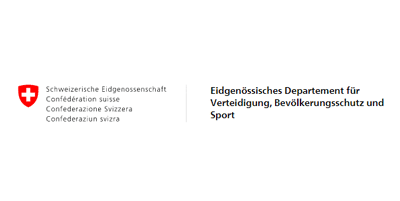
|
Description |
The aim of this project was to investigate individual differences related to recognizing threat items in X-ray images. The following tests were applied: Object Recognition Test (ORT), Prohibited Items Test (PIT), Bomb Detection Test (BDT), and visual cognition tests. This project provided important results regarding the detection of different threat types in X-ray images of baggage, individual differences related to visual abilities vs. training, as well as implications for pre-employment assessment. |
|
Funding |
Eidgenössisches Department für Verteidigung, Bevölkerungsschutz und Sport (VBS) |
|
Scope |
Soldiers involved in security control with X-ray machines |
|
Collaborations |
Swiss Army |
|
Duration |
2004 |
X-RAY IMAGE TUTORING TECHNOLOGY FOR AIRPORT SECURITY SCREENING IN GERMANY

|
Description |
In this project the new version of X-Ray Tutor is used to increase detection performance of aviation security screeners. A new X-ray image interpretation competency test (X-Ray CAT) is used before and after three and six months of training. The aims of this project are (1) to measure performance inscrease as a result of training, (2) to measure which objects and viewpoints are difficult to recognize, and (3) to examine whether recognition becomes less dependent on viewpoint as a result of training. |
|
Funding |
German Ministry of Interior |
|
Scope |
German airports |
|
Collaborations |
Bundesgrenzschutz (BGS), Flug- und Industriesicherheit Service- und Beratungs- GmbH (F.I.S.), Security Training International (STI) |
|
Duration |
2004 – 2006 |
RESEARCH ON X-RAY IMAGE TUTORING TECHNOLOGY FOR AVIATION SECURITY SCREENERS IN CANADA

|
Description |
The aim of this project is to increase airport security by (1) applying efficient and effective training that adapts to each screener, (2) by using scientific tests for measuring baseline scores and training effectiveness (pre- and posttests), and (3) by optimizing pre-employment assessment of screeners. Three modules are used to achieve the objectives: (1) A training system, which adapts to each individual (X-Ray Tutor), (2) scientific tests for measuring detection performance (ORT, PIT, BDT, X-Ray CAT), and (3) a test battery for pre-employment assessment (including ORT and other cognitive tests). |
|
Funding |
Canadian Air Transport Security Authority (CATSA) |
|
Scope |
Canadian airports |
|
Collaborations |
Zurich Airport, Zurich State Police, Airport Division |
|
Duration |
2003 – 2010 |
AVIATION SECURITY TESTS IN BELGIUM (UZH)
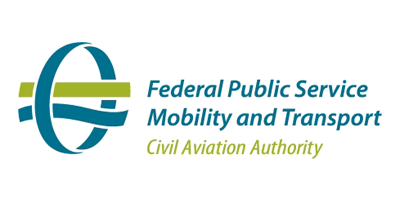
|
Description |
In this project computer-based tests are applied in order to measure the ability and competency needed to reliably detect prohibited items in X-Ray images. The object recognition test (ORT) is used to measure how well someone can detect threat items (guns and knives) when they are rotated, superimposed by other objects and placed in close-packed bags. The prohibited items test (PIT) is used to examine whether screeners know which items are prohibited and what they look like in X-ray images of passenger bags. The results of this project provide important information for certification and comptency assessment, quality control, as well as risk assessment in aviation security. |
|
Funding |
Belgian Civil Aviation Administration |
|
Scope |
Belgian airports |
|
Collaborations |
European Aviation Security Training Institute (EASTI), Bruxelles International Airport Company (BIAC), Zurich State Police, Airport Division |
|
Duration |
2003 – 2008 |
COGNITIVE VISION SYSTEMS (COGVIS)

|
Description |
The CogVis consortium has been brought together to study the design of Cognitive Vision Systems. In this context a “cognitive vision system” is defined as a system that uses visual information to achieve:
Cognitive vision only makes sense in the context of a “system” where there is a user that provides task information and which uses the information generated by the system. In addition a fundamental assumption is that such systems are embodied so that they interact with the world using active vision, manipulation or similar facilities. |
|
Co-Funding |
European Commission, Essential Technologies, EU CEC, Contract IST-2000-29375 |
|
Scope |
Collaboration between leading European research institutes in computational vision and visual cognition |
|
Duration |
2001 – 2004 |
ROBUST RISK BASED SCREENING AND ALERT SYSTEM FOR PASSENGERS AND LUGGAGE (TRESSPASS)

Description
The overall scope of
Co-Funding: EU Horizon 2020 Programme, Grant Agreement No. 787120
Scope: Europe
Start: 2018
SYSTEMATIC THREAT ASSESSMENT, NEW STANDARDS, LEARNING TECHNOLOGY RESEARCH – TRANSFER INTO PRACTICE (STA²RT)

Description
In addition to the continuation and further development of the Systematic Threat Assessment (STA), this project aims to answer practically relevant questions in connection with the change towards the latest equipment standard in the field of hand luggage security screening. The goal is to then increase both effectiveness and efficiency in the defense against unlawful acts against civil aviation in Switzerland through a targeted transfer into practice. Firstly, the STA will be continued and further developed with new concepts and methods. Furthermore, practically relevant questions regarding the use of 3D computed tomography (CT) and explosives detection (EDSCB) for cabin baggage screening (CBS) will be examined scientifically. Additionally, new digital learning technologies using virtual reality (VR) will be evaluated for training and competency assessment of security screeners. Last but not least, a transfer into practice is to take place by transferring research results into existing structures and processes for personnel selection, training and competency assessment.
Co-Funding: Federal Office of Civil Aviation Switzerland
Scope: Switzerland
Start: 2018
Aviation Security Systems: Unpredictability Measures Evaluation (ASSUME)

Description
Aviation security measures tend to be predictable, especially for insiders. This can produce severe vulnerabilities in the security level making it potentially easier to circumvent the measures. A project headed by Zurich State Police, Airport Division, was conceived in collaboration with CASRA and the Federal Institute of Technology Zurich (ETHZ) to address this aspect. Within it, basic and applied research is conducted on the impact and mechanisms of unpredictable measures in aviation security on risk perception and risky behavior. A long-term reduction of insider threat is sought through the evaluation and optimization of existing security measures. A central contribution of CASRA to the project is intelligence research and development.
Co-Funding: Federal Office of Civil Aviation Switzerland
Scope: Switzerland
Start: 2017
PILOT PROJECT WITH THE UNITED NATIONS IN LATIN AMERICA

Description
The United Nations Regional Centre for Peace, Disarmament and Development in Latin America and the Caribbean (UNLIREC) conducted the pilot of the Course for Interdicting Small Arms in Postal Shipments (ISAPS) in Costa Rica in close collaboration with CASRA. The course aims at improving the capacity of officials to identify weapons and parts/components in postal shipments by means of X-ray technology. For more information, please follow the link to UNLIREC’s website here. Further courses have since been conducted in other countries.
Co-Funding: UNLIREC
Scope: Postal screening in Latin America
Start: 2017
A Project for Checkpoints for Airport Security of Tomorrow (4CAST)

Description
Technological change and ever evolving threat scenarios lead to new and adaptions of existing screening processes. When changing the screening process the impact on effectiveness, efficiency, passenger satisfaction and screeners must be considered. In this project, a large amount of data from simulation models of checkpoints, from human factor models, together with meta data from screeners are aggregated in a secure data base. A connected data analytics and visualization platform will allow airports, regulators and other end-users to view the results of simulation experiments and make decisions based on reliable data.
Co-Funding: Federal Office of Civil Aviation Switzerland
Scope: Switzerland
Start: 2017
THREAT IMAGE PROJECTION FOR REMOTE CABIN BAGGAGE SCREENING (RCBS)

Description
As part of the project “Threat Image Projection for Remote Cabin Baggage Screening” (RCBS) current strengths and weaknesses of different RCBS systems are evaluated based on scientific methods. Further questions are addressed either in a laboratory setting or in scientific field studies at airports and there will be improvement measures determined.
Co-Funding: Federal Office of Civil Aviation Switzerland
Scope: Switzerland
Start: 2016
MULTI-VIEW & 3D CT FOR ACBS AND HBS (3DMV)

Description
The project “Multi-view & 3D CT for ACBS and HBS” (3DMV) aims at scientific research and evaluation of the potential of the multi-view and 3D computer tomography technologies for enhancing the effectiveness and efficiency of aviation security in Switzerland. Particular attention is paid to aspects of human-machine interfaces and which competencies human operators must have in order to work with this kind of equipment in a most effective way. The Swiss Federal Laboratories for Materials Science and Technology (EMPA) is an important partner in this project and helps to conduct fundamental research. In various studies we will examine potential benefits and challenges, as well as potential implications in regards to the human factor.
Co-Funding: Federal Office of Civil Aviation Switzerland
Scope: Switzerland
Start: 2015
SYSTEMATIC THREAT ASSESSMENT AND TIP OPTIMIZATION (SGATO)

Description
The aim of this project is to increase the effectiveness and efficiency of security measures in cabin baggage and hold baggage screening by using a systematic threat assessment as well as optimizing the threat image projection (TIP) system.
The systematic threat assessment which was developed within the ICU project (see below for a more detailed description) will be continued and further elaborated. In addition, the current TIP system as one potential preventive measure will be evaluated and possible solutions developed.
Co-Funding: Federal Office of Civil Aviation Switzerland
Scope: Switzerland
Start: 2015
COMPUTER-BASED TESTS FOR CERTIFICATION OF AVIATION SECURITY SCREENERS IN SWITZERLAND

Description
Certification and competency assessment of airport security screeners have become very important topics in the last few years. A common certification procedure helps to achieve comparable standards across different airports and countries. On behalf of this project computer-based tests are used to measure ability and competency of airport security screeners in six Swiss airports. The Object Recognition Test (ORT) is used to assess screener ability needed for recognizing threat items in rotation, when they are superimposed by other objects and placed in close-packed bags. The X-Ray Competency Assessment Test (X-Ray CAT) is used to assess visual knowledge about prohibited items. A theoretical exam on computer (TEC) is applied to test the theoretical knowledge required in airport security screening procedures. The results provide a solid basis for a reliable and standardized certification procedure performed by the Swiss airports in collaboration with the Swiss Federal Office of Civil Aviation (FOCA).
Funding: Swiss airports and Federal Office of Civil Aviation Switzerland
Scope: All Swiss airports
Start: 2004
INCREASING SECURITY AND EFFICIENCY AT ZURICH AIRPORT

Description
In the last decade large investments have been made into aviation security technology. However, the most expensive equipment is of small value if the humans that operate it are not selected and trained to perform their task accurately and efficiently. In this project security and efficiency is increased by (1) applying reliable tests for pre-employment assessment, (2) by using individually adaptive training (X-Ray Tutor), and (3) by implementing TIP. In this project the data for assessing the effectiveness of these instruments are analyzed. Additionally, different basic and applied aspects of the object detection and visual cognition are examined.
Funding: Flughafen Zürich AG
Scope: Flughafen Zürich AG
Start: 2001
Pilot study with Cooperative Aviation Security Program - Asia Pacific Region (CASP-AP)

Description
Participants from eight different countries from the Asia Pacific Region evaluated the benefit of the web-based CASRA Solution as a capacity-building tool regarding personnel selection, X-ray image recognition training, as well as competency assessment. The results showed again that training with XRT3 significantly improves screeners’ detection performance (as measured with the X-Ray CAT) compared to no training and that this improvement already occurs after less than ten hours of training.
Funding: –
Scope: Cabin baggage screening at international airports
Duration: 2018 – 2019
STUDY WITH CARNIVAL MARITIME

Description
The objective of the study was to evaluate the CASRA Solution for use on board the COSTA CROCIERE fleet, specifically regarding suitability, effectiveness and process support for the areas of personnel selection, X-ray image recognition training, and competency assessment. The study replicated previous findings in a maritime use case: A combined application of the X-Ray ORT, XRT3 and X-Ray CAT is an effective and efficient approach to select job applicants with a high potential to become good screeners, train them with an individually adaptive algorithm and level structure, and assess their performance with reliable image interpretation tests to verify compliance with security standards.
Funding: Carnival Maritime
Scope: Security officers of Carnival Maritime
Duration: 2017 – 2018
OSARP TRAINING STUDY

Description
Computer-based training for X-ray image interpretation is mandatory for airport security screeners and is used at airports all over the world. Current training systems are focusing mainly on visual knowledge, i.e. what objects are forbidden and how do they look in an X-ray image. A useful addition for the recognition of bombs in X-ray images of hold luggage could be so called On-Screen-Alarm-Resolution-Protocols (OSARP). In OSARP training, the screeners learn how to use certain rules for optimal X-ray image interpretation and certain heuristics for a better decision process.
Funding: X-ray manufacturer, FHNW
Scope: Hold baggage screening at an international airport
Duration: 2017 – 2018
PSYCHOLOGY STUDENT WORK PASSENGER SATISFACTION

Description
A dedicated group of students from the School of Applied Psychology investigated which factors are relevant for passengers to be satisfied with airport security checkpoints. They first reviewed existing literature and conducted ten semi structured interviews to derive a set of potentially relevant factors. They then developed a questionnaire based on existing and new items and scales. 405 participants completed the questionnaire, providing information on either their previous, best, or worst checkpoint experience. The analyses revealed a broad spectrum of relevant aspects. On a general level, the behavior of the security personnel and waiting times were found to be most relevant for passenger experience regarding security checkpoints.
Funding: –
Scope: Cabin baggage screening at an international airport
Duration: 2017
Certification Pilot Study with the Croatian Civil Aviation Agency (CCAA)

Description
Security officer certification is ideally preceded by a reliable selection process, sound training of personnel, and the periodical verification of required competencies. A practical implementation of a certification procedure was conducted collaboratively with the Croatian Civil Aviation Agency (CCAA) in a pilot study.
Funding: CCAA
Scope: Aviation security officers at Croatian Airports
Duration: 2017
2D VS. 3D X-RAY IMAGE DISPLAY STUDY

Description
While currently state-of-the-art X-ray machines employed at airports for hold baggage screening display static 2D single or multi-view X-ray images, new developments in X-ray screening technology offer 3D rotatable X-ray images, allowing screeners to view a bag from different angles. The purpose of this study is to evaluate this new technology and its effects on the screeners’ detection performance in hold baggage screening (HBS). More specifically, it is investigated if threat detection performance differs significantly between screeners when they analyze X-ray images in single view 2D vs. 3D rotatable X-ray images. If detection performance is significantly better when images are analysed in 3D compared to 2D single view, results imply that viewing baggage with 3D rotatable images provides a significant benefit to the screeners. Furthermore, the results of the project shall give an indication on how screeners who will work with 3D rotatable images for the first time are able to adapt to this compared to screeners who are already experienced in analysing 3D rotatable images. The project is being conducted by CASRA in collaboration with the German Federal Police.
Funding: X-ray manufacturer, FHNW
Scope: Hold baggage screening at one Swiss and one French airport
Duration: 2015 – 2017
Automated Comparison of X-ray Images for Cargo Scanning (ACXIS)

Description
ACXIS is a European research project within the Seventh Framework Programme answering the call SEC-2012.3.4-1: «Research on “automated” comparison of x-ray images for cargo scanning with reference material (use of historic images in an automated environment) to identify irregularities» of the European Commission. The main objectives of the project ACXIS are to develop a manufacturer-independent reference data base for X-ray images of illegal and legitimate cargo, procedures and algorithms to render uniform X-ray images of different cargo scanners and measurement parameters, and an automated identification of potentially illegal cargo. Historic images of illegitimate cargo, images of illegal cargo mock-ups as well as images of legitimate cargo will be integrated into the reference data base. For more information please see www.acxis.eu.
Funding: Seventh Framework Programme (FP7) of the European Commission
Scope: Europe
Duration: 2013 – 2017
INTELLIGENCE, COMPETENCE AND UNPREDICTABILITY (ICU)

Description
The aim of this project is to increase the effectiveness and efficiency of security measures in cabin baggage and hold baggage screening by developing and evaluating intelligence, competence and unpredictability measures.
The intention is to combine training of security officers and knowledge about current and emerging threats with unpredictable security measures. The ICU project is funded by Federal Office of Civil Aviation (FOCA) and has a duration of three and a half years.
Co-Funding: Federal Office of Civil Aviation Switzerland
Scope: Switzerland
Duration: 2013 – 2016
ADVANCED CABIN BAGGAGE SCREENING (ACBS)

Description
The Ministry of Security and Justice in the Netherlands (NCTV) has funded a new study in the area of Advanced Cabin Baggage Screening (ACBS). New technological advancements of X-ray screening technology (ACBS) include features such as automated threat detection, multiple views or 3D rotatable views of luggage, in order to enhance the detection of prohibited items in passenger bags. In this study, it will be evaluated how man-machine system performance can be improved through the application of automated explosive detection. Performance (detection performance and reaction time) will be compared between conditions where ACBS automated explosive detection is used to when security screening is conducted with conventional X-ray machines. Scientifically based recommendations for criterion settings (percent detection and false alarms) and the interaction process of the human operator and the machine (alarm resolution procedure) when ACBS is applied will be derived. The project is being conducted by CASRA in collaboration with NCTV and the German Federal Police.
Funding: Ministry of Security and Justice in the Netherlands (NCTV)
Scope: Amsterdam Airport Schiphol and Zurich Airport
Duration: 2013 – 2015
CERTIFICATION UPGRADE 2013

Description
In Switzerland aviation security screeners have to be certified regularly since 2004 (see project “Computer-based tests for certification of aviation security screeners in Switzerland”). The goal of the Certification Upgrade 2013 project is to enhance two main areas of that project:
- Theoretical Exams on Computer (TEC): The theoretical component of the certification represents a Multiple-Choice-Test covering the different areas of aviation security: Cabin Baggage Screening (CBS), Hold Baggage Screening (HBS), Cargo Screening and Mail Screening. This knowledge test is based on the regulations originating from the Swiss National Civil Aviation Security Programme (NASP) and on working procedures at Swiss airports. In this project the TEC is overhauled completely to adapt to the newest state of knowledge and to enhance its statistical goodness.
- Furthermore a common platform for all security providers having aviation security screeners taking part at the Swiss certification and the Federal Office of Civil Aviation (FOCA) will be provided by this project. The application process to the regular certification, the overview about the latest results and various report for a better organization in connection to the certification process are to be implemented into a centrally accessible database including an user-friendly front-end.
Funding: Federal Office of Civil Aviation Switzerland
Scope: Switzerland
Duration: 2013 – 2014
SCOPING STUDY ON PROFILING AND BEHAVIORAL ANALYSIS AS A SECURITY MEASURE AT SWISS AIRPORTS

Description
The aim of this project is to examine profiling and behavioral analysis as a new and additional security measure at airports and create a scientifically sound foundation for an implementation of behavioral security screening (BSS) in Switzerland. BSS means a shift of attention away from the usual threat items towards the person, his or her behavior and, ultimately, the underlying motivation.
The first step of the scoping study is the review and analysis of existing literature, complemented by interviews with international experts in the field of BSS. In a next step the gathered findings will be used to conduct scientifically based workshops with relevant stakeholders to develop possible scenarios for the implementation of BSS. As a final step, a pilot study will provide information on the benefits of BSS training for security officers.
Funding: Federal Office of Civil Aviation Switzerland
Scope: Switzerland
Duration: 2013 – 2014
Accelerated Checkpoint Design Integration Test and Evaluation (XP-DITE)

Description
The XP-DITE project brings together 13 organizations across Europe to develop, demonstrate and validate a comprehensive, passenger-centered, outcome-focused, system-level approach to the design and evaluation of airport security checkpoints. XP-DITE will allow airports, checkpoint designers and regulators to incorporate a wide range of requirements and evaluate checkpoint performance against system-level security, cost, throughput, passenger satisfaction and ethical factors. The result will be robust security performance, whilst giving airports the freedom to use innovative procedures and technology to improve passenger convenience and reduce delays. For more information please see www.xp-dite.eu.
Funding: Seventh Framework Programme (FP7) of the European Commission
Scope: Europe
Duration: 2012 – 2017
COMPUTER BASED TRAINING FOR X-RAY SCREENING USING XRT3 AT ALL CANADIAN AIRPORTS

Description
The objective of this project is to provide CATSA an innovative and very efficient and effective computer based training tool for use in training, skill development and testing personnel in X-ray image threat detection. This is accomplished by the new version of X-Ray Tutor (XRT3). It is a complete new software replacing the previous version XRT2 which was installed at all 89 Canadian airports in 2005-2006. Key features of XRT3 for CATSA are:
- Integration and interoperability with the existing IT systems of CATSA using a web-based approach with Microsoft Silverlight technology
- Operational performance of the software adapted to the constraints of the country wide IT environment, particularly the variable WAN circuit bandwidth
- Enhanced individually adaptive training algorithm
- New training level design and performance parameters
- New sophisticated reporting system and administration functions
XRT3 will be substituted by XRT in 2019, the newest software solution of CASRA.
Funding: Canadian Air Transport Security Authority (CATSA)
Scope: All 89 Canadian Airports
Duration: 2011 – 2019
X-RAY TRAINING AND COMPETENCY ASSESSMENT OF SECURITY OFFICERS AT THE FEDERAL COURT BELLINZONA, SWITZERLAND

Description
The aim of this project is to increase X-ray image interpretation competency of security officers at the federal court by applying X-Ray Tutor, an individually adaptive computer based training system as well as competency assessment tests used for certification at Swiss airports.
Funding: Federal Court in Bellinzona
Scope: Federal Court in Bellinzona
Duration: 2011 – 2013
SELECTION, INITIAL TRAINING, X-RAY TRAINING OF SWISSPORT’S SECURITY OFFICERS AT GENEVA AIRPORT

Description
The aim of this project is the selection of suitable employees, initial training in the area of cargo screening, as well as X-ray training to increase X-ray image interpretation competency of security officers. Therefore the scientifically based X-Ray Object Recognition Test (X-Ray ORT), our blended learning concept for cargo screening as well as X-Ray Tutor (XRT) was used.
Funding: Swissport Geneva
Scope: Swissport Geneva
Duration: 2011 – 2013
CERTIFICATION SOFTWARE FOR THE CIVIL AVIATION OFFICE (CAO) OF THE REPUBLIC OF POLAND

Description
Certification and competency assessment of aviation security officers have not only become very important in the last few years, but also mandatory according to the EU regulation. A common certification procedure helps to achieve comparable standards across different airports or even countries. Most important, certification tests have to be valid, reliable, objective and standardized. On behalf of this project a testing was delivered to the Civil Aviation Office (CAO) of the Republic of Poland. The software includes exam modules that enable assessment of individuals’ competency to analyze images generated by X-ray machines used for screening of cabin baggage, hold baggage, cargo and mail focused on detection of prohibited items.
Funding: CAO
Scope: All aviation security officers at Polish Airports
Duration: 2011 – 2013
APPLICATION OF X-RAY IMAGE INTERPRETATION TESTS FOR SECURITY OFFICERS AT THE NUCLEAR POWER PLANT MÜHLEBERG, SWITZERLAND

Description
The goals of this project are the implementation of recurrent X-ray image interpretation tests as well as increasing the X-ray image interpretation competency of security officers working at the Nuclear Power Plant Mühleberg. The following tests will be applied: X-Ray Object Recognition Test (X-Ray ORT), X-Ray Competency Assessment Test for Cabin Baggage Screening (X-Ray CAT CBS), X-Ray Tutor (XRT CBS). Detailed analyses regarding the effectiveness and efficiency in detecting prohibited items in security controls using X-ray screening will be carried out. In this project, the same tests which are used for the certification of airport security screeners in Switzerland are employed.
Funding: Nuclear Power Plant Mühleberg, Switzerland
Scope: Nuclear Power Plant Mühleberg, Switzerland
Duration: 2010
TESTING THE INFLUENCE OF MOTION IMAGING FOR THE INSPECTION OF LAPTOPS IN CABIN BAGGAGE SCREENING

Description
Large amounts of money are being invested into the improvement and further development of new screening technologies, continuously aiming at improving image quality, automatic explosive detection and enhancing the detection of prohibited items for human operators i.e. screening officers. Especially the latter is of high importance, as the actual identification of prohibited items lies mainly in the hands of human operators. Thus, it is of great important to evaluate any new technologies and machines developed for screening purposes with regard to image quality and the actual benefits for the people that have to handle and work with these machines (i.e. man-machine-interaction). The aim of this project was to compare motion imaging (Array CT machine) to single view imaging with regard to detection performance. More specifically, it was investigated whether a significant difference in detection performance aroused when motion imaging was used and laptops were left inside passenger bags compared to the situation where only single view images were provided but laptops were taken out of passenger bags.
Funding: Reveal/SAIC
Scope: Reveal/SAIC
Duration: 2011
APPLICATION OF X-RAY IMAGE INTERPRETATION TESTS FOR SECURITY OFFICERS OF THE SWISS FEDERAL SECURITY SERVICE FEDPOL

Description
The aim of this project is to conduct recurrent X-ray image interpretation tests for X-ray screeners of the Swiss Federal Security Service FEDPOL. The project is based on regulations specified in the Swiss National Aviation Security Program (NASP) which specifies the certification of aviation security screeners. The following tests are conducted periodically: X-Ray Object Recognition Test (X-Ray ORT 1.0), X-Ray Competency Assessment Test for Cabin Baggage Screening (X-Ray CAT CBS 4.0), X-Ray Competency Assessment Test for Hold Baggage Screening (X-Ray CAT HBS 4.0). Detailed analyses were conducted regarding the effectiveness and efficiency in recognizing prohibited items in security controls using X-ray screening.
Funding: Eidgenössisches Justiz- und Polizeidepartement EJPD, Bundesamt für Polizei FEDPOL, Bundessicherheitsdienst
Scope: Switzerland
Duration: 2008 – 2012
ECAC BDS TESTING OF L-3 PROVISION 100 (MIKS)

Description
In state-of-the art airport security screening, passengers have to walk through a metal detector before being allowed to board an aircraft. With bodyscanner technology it is possible since recently to screen passengers more accurately to examine whether they carry prohibited items on the body. The Technical Task Force of the European Civil Aviation Conference (ECAC) has created a Body Scanners Study Group (ECAC BSSG) in 2007. In a two years project, this group has developed a Body Scanner Testing Methodology (BSTM). The main aim of the BSTM is to test human-machine performance using body scanners for the detection of prohibited items carried by passengers. In this project, the BSTM was applied to test the L-3 ProVision 100 body scanner. This project was conducted to apply the BSTM (this was the first time world wide) and to refine the BSTM. The result of this project provided important information for using the BSTM for certification of body scanners in EU and ECAC member states.
Funding: Dutch National Coordinator on Counter-Terrorism
Scope: EU and ECAC member states
Collaborations: Zurich Airport; Zurich State Police, Airport Division; Zurich City Police, Scientific Research Service
Duration: 2008 – 2009
STUDY ON THE IMPACT OF DUAL VIEW AND AUTOMATIC EXPLOSIVES DETECTION IN HAND LUGGAGE SCREENING OF LAPTOPS

Description
This study investigated the impact dual view and automatic explosives detection technology have on the performance of aviation security screeners who visually inspect hand luggage using X-ray screening systems. So-called “advanced cabin baggage X-ray screening” (ACBX) systems provide multiple X-ray views of bags and automated explosive detection. A recent study by von Bastian, Schwaninger and Michel (2008) has shown that multi-view X-ray technology can generate key benefits for the screening of hand luggage. One aspect of specific interest in the present study was whether or not it will be possible to leave laptops in a passenger’s hand luggage or whether laptops will continue having to be removed from hand luggage and be screened separately. It was found that ACBX systems have advantages under certain specific conditions, e.g. for the detection of rotated guns. However, leaving laptops in passenger bags cannot be recommended, even if ACBX technology is used. The results of the study have a substantial impact on aviation security regulations in Germany and other European member states.
Funding: German Ministry of the Interior
Scope: European airports
Collaborations: Kompetenzzentrum für polizeiliche Detektionstechnologien Lübeck; Flughafen Nürnberg; Sicherheitsgesellschaft Nürnberg
Duration: 2008
IDENTITY VERIFICATION FROM PHOTOGRAPHS IN TRAVEL DOCUMENTS: MEASURES OF PERFORMANCE ENHANCEMENT

Description
At border control, it is the security personnel’s job to identify possible passport fraud, in particular to verify whether the photograph in a travel document matches its bearer. However, as various studies have shown, identity verification from document photographs is far from accurate. The aim of this project is thus to develop a procedure for security personnel to enhance identity verification performance from document photographs. In three studies, four factors shall be investigated: First, the reduction of time pressure in identity verification; second, the potential benefit of inversion of the document photograph on identity verification; third, the enhancement of sensitivity towards configural information contained in faces through training; and last, enlargement of the document photograph for better identity verification. All four factors are believed to be potentially beneficial on identity verification performance and could well influence standard verification procedures at border control.
Funding: Stiftung Suzanne und Hans Biäsch zur Förderung der Angewandten Psychologie
Scope: Research grant to S. Chiller-Glaus
Collaborations: Zurich State Police, Airport Division
Duration: 2007 – 2008
STUDY ON THE EFFECT OF CABIN BAG SIZE ON THE EFFECTIVENESS OF SCREENING

Description
The aim of this project was to provide the basis for scientifically based conclusions about the significance of the bag size variable by itself and in relation with other variables. In this research project the effect of a number of variables including bag size, bag complexity, packing density, etc, on screener performance was investigated. For this, a set of X-ray images of cabin bags were captured, and presented in CBT format to screeners across nine European airports. The detection performance of the screeners was recorded, and analysed against the identified variables. The study provided scientifically based conclusions about the significance of the bag size variable (by itself and in relation with other variables). The important recommendations from the study allowed the European Commission to make an informed evidence-based decision on the size of bags passengers that are allowed to take on board aircraft. Based on this study, the European Union decided to repeal the enforcement of the limitation of the cabin baggage to IATA size bags by EC Regulation 358/2008 of 22 April 2008.
Funding: UK Department for Transport (via contract with QinetiQ), European Commission Leonardo da Vinci Programme (VIA Project, DE/06/C/F/TH-80403), 9 European airports, their security companies and Appropriate Authorities
Scope: 9 European airports
Collaborations: QinetiQ, Technical Task Force of the European Civil Aviation Conference (ECAC)
Duration: 2007 – 2008
DEVELOPMENT OF A REFERENCE LEVELS FRAMEWORK FOR AVIATION SECURITY SCREENERS (VIA PROJECT)

Description
The main aim of this project is to develop appropriate competence and qualification assessment tools for airport security screeners. This provides the basis for a reference levels framework (RLF) at national and cross-sectoral level, which could serve selection processes, training materials development and application, certification and mobility. Our work focusses on the application of competency assessment tests at various airports, the application of linear models for explaining X-ray image interpretation, and training effectiveness studies. This work is conducted in close collaboration with the Max Planck Institute for Biological Cybernetics in Tübingen, Germany, the European Aviation Security Training Institute in Brussels, and appropriate authorities such as the Ministry of Interior in Germany and the Belgian Civil Aviation Administration.
Funding: European Commission and airport security industry
Scope: 9 main partners from 6 countries including 3 European airports
Collaborations: 6 airports associated to main partners (a total of 9 airports participate in this project)
Duration: 2006 – 2008
TIME COURSE OF PROCESSING EXTERNAL AND INTERNAL FEATURES IN FACE MATCHING TASKS

Description
The aim of this research project is to systematically investigate the time course of processing internal and external features in face matching tasks with regard to a) face familiarity, b) orientation (upright or inverted), c) other race effect, and d) different viewpoints (frontal or side view). These investigations will result in a deeper understanding of the time-course, relevant representations, and processes in face matching. Besides this theoretical contribution, the knowledge gained from these studies could also have important implications for applied tasks in which face matching is used, e.g. in passport verification at airports.
Funding: Swiss National Science Foundation
Scope: Research grant to B. Veres
Duration: 2006 – 2008
RESEARCH ON SECURITY CONTROL WITH X-RAY EQUIPMENT IN THE SWISS ARMY

Description
The aim of this project was to investigate individual differences related to recognizing threat items in X-ray images. The following tests were applied: Object Recognition Test (ORT), Prohibited Items Test (PIT), Bomb Detection Test (BDT), and visual cognition tests. This project provided important results regarding the detection of different threat types in X-ray images of baggage, individual differences related to visual abilities vs. training, as well as implications for pre-employment assessment.
Funding: Eidgenössisches Department für Verteidigung, Bevölkerungsschutz und Sport (VBS)
Scope: Soldiers involved in security control with X-ray machines
Collaborations: Swiss Army
Duration: 2004
X-RAY IMAGE TUTORING TECHNOLOGY FOR AIRPORT SECURITY SCREENING IN GERMANY

Description
In this project the new version of X-Ray Tutor is used to increase detection performance of aviation security screeners. A new X-ray image interpretation competency test (X-Ray CAT) is used before and after three and six months of training. The aims of this project are (1) to measure performance inscrease as a result of training, (2) to measure which objects and viewpoints are difficult to recognize, and (3) to examine whether recognition becomes less dependent on viewpoint as a result of training.
Funding: German Ministry of Interior
Scope: German airports
Collaborations: Bundesgrenzschutz (BGS), Flug- und Industriesicherheit Service- und Beratungs- GmbH (F.I.S.), Security Training International (STI)
Duration: 2004 – 2006
RESEARCH ON X-RAY IMAGE TUTORING TECHNOLOGY FOR AVIATION SECURITY SCREENERS IN CANADA

Description
The aim of this project is to increase airport security by (1) applying efficient and effective training that adapts to each screener, (2) by using scientific tests for measuring baseline scores and training effectiveness (pre- and posttests), and (3) by optimizing pre-employment assessment of screeners. Three modules are used to achieve the objectives: (1) A training system, which adapts to each individual (X-Ray Tutor), (2) scientific tests for measuring detection performance (ORT, PIT, BDT, X-Ray CAT), and (3) a test battery for pre-employment assessment (including ORT and other cognitive tests).
Funding: Canadian Air Transport Security Authority (CATSA)
Scope: Canadian airports
Collaborations: Zurich Airport, Zurich State Police, Airport Division
Duration: 2003 – 2010
AVIATION SECURITY TESTS IN BELGIUM (UZH)

Description
In this project computer-based tests are applied in order to measure the ability and competency needed to reliably detect prohibited items in X-Ray images. The object recognition test (ORT) is used to measure how well someone can detect threat items (guns and knives) when they are rotated, superimposed by other objects and placed in close-packed bags. The prohibited items test (PIT) is used to examine whether screeners know which items are prohibited and what they look like in X-ray images of passenger bags. The results of this project provide important information for certification and comptency assessment, quality control, as well as risk assessment in aviation security.
Funding: Belgian Civil Aviation Administration
Scope: Belgian airports
Collaborations: European Aviation Security Training Institute (EASTI), Bruxelles International Airport Company (BIAC), Zurich State Police, Airport Division
Duration: 2003 – 2008
COGNITIVE VISION SYSTEMS (COGVIS)

Description
The CogVis consortium has been brought together to study the design of Cognitive Vision Systems. In this context a “cognitive vision system” is defined as a system that uses visual information to achieve:
- Recognition and categorization of objects, structures and events
- Learning and adaptation
- Memory and representation of knowledge
- Control and attention
Cognitive vision only makes sense in the context of a “system” where there is a user that provides task information and which uses the information generated by the system. In addition a fundamental assumption is that such systems are embodied so that they interact with the world using active vision, manipulation or similar facilities.
Co-Funding: European Commission, Essential Technologies, EU CEC, Contract IST-2000-29375
Scope: Collaboration between leading European research institutes in computational vision and visual cognition
Duration: 2001 – 2004
